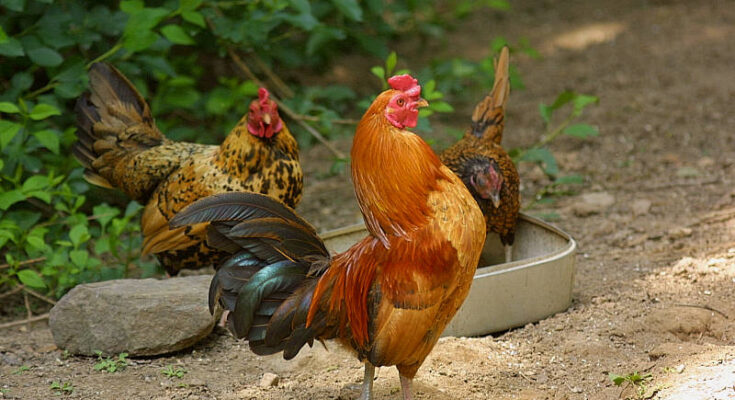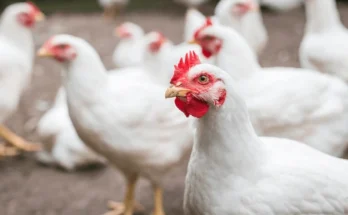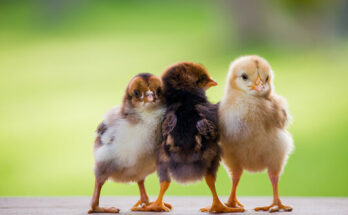Introduction To The Pecking Order in Chickens
When it comes to chickens, understanding the pecking order is crucial for maintaining a harmonious flock. Every poultry owner needs to understand how the pecking order in chickens actually works. The pecking order refers to the social hierarchy within a group of chickens, determining who’s in charge and who ranks lower. In this blog post, we’ll explore the dynamics of the pecking order, its significance in a chicken community, and how to manage it effectively to ensure the well-being of your feathered friends. Understanding the pecking order is key to fostering a peaceful and thriving chicken coop.
Understanding the Pecking Order In Chickens
What is the Pecking Order?
The pecking order refers to the social hierarchy established within a flock of chickens. It determines each chicken’s rank and influences their behavior and interactions. At the top of the pecking order is the dominant or alpha bird, with the lowest-ranked chickens at the bottom.
Chickens establish this order through a series of aggressive or submissive interactions. These interactions often involve pecking, chasing, and vocalizations, and help to establish and maintain the social structure within the flock.
Why Do Chickens Establish a Pecking Order?
The pecking order serves several important purposes within a chicken flock. Firstly, it helps to reduce tension and conflict by establishing a clear social structure. This, in turn, minimizes aggressive behavior and promotes overall stability within the group.
Additionally, the pecking order helps to ensure that limited resources, such as food and nesting spaces, are distributed fairly. Dominant chickens have priority access to these resources, but lower-ranked birds still have the opportunity to eat and rest without constant competition.
Overall, the pecking order is a natural and necessary aspect of chicken behavior, serving to maintain order, minimize conflict, and regulate access to essential resources within the flock.
Dynamics of the Pecking Order
How the Pecking Order is Established
The pecking order among chickens is established through a combination of physical and behavioral interactions. When a new chicken is introduced to an existing flock, there is typically a period of posturing and aggressive behavior as the birds determine their status within the hierarchy. This often involves pecking, flapping wings, and vocalizations. The strongest and most dominant birds will assert themselves, while the weaker or more submissive chickens will fall into place according to the established hierarchy.
Social Interactions Within the Pecking Order
Once the pecking order is established, social interactions among the chickens are heavily influenced by their rank within the flock. Higher-ranking chickens will assert their dominance through pecking, chasing, and sometimes restricting access to food and resources. Lower-ranking chickens will often exhibit submissive behaviors, such as avoiding direct eye contact, moving out of the way of higher-ranking birds, and waiting their turn to access resources. This social structure is important for maintaining order within the flock and minimizing conflict.
Impact of the Pecking Order on Chicken Behavior and Well-being
The pecking order has a significant impact on chicken behavior and well-being. Chickens lower in the pecking order may experience higher levels of stress, as they are constantly navigating their social standing and may face aggression from higher-ranking birds. This can lead to decreased overall well-being, affecting factors such as egg production and overall health. Understanding the dynamics of the pecking order is crucial for ensuring the welfare of chickens in a flock and implementing strategies to minimize stress and conflict.
Factors Influencing the Pecking Order
Age and Size
As in many social hierarchies, age and size play significant roles in determining the pecking order among chickens. Older and larger chickens often assert dominance over younger or smaller ones. Younger chickens generally defer to their older counterparts, while larger chickens may use their size to establish their rank within the flock.
Breed and Genetics
The breed and genetic makeup of chickens also influence their placement in the pecking order. Certain breeds may have inherent traits that lead to a more assertive or submissive demeanor. Additionally, genetic factors can contribute to an individual chicken’s predisposition towards aggression or submissiveness, shaping its position within the social hierarchy. We have a piece about the best egg laying breeds which can be found here.
Environmental Factors
The environment in which chickens are raised can have a significant impact on their pecking order dynamics. Factors such as available space, access to resources like food and water, and the overall living conditions can influence how chickens interact within the flock. A crowded or stressful environment may lead to more aggressive behavior, affecting the establishment and maintenance of the pecking order.
Managing the Pecking Order In Chickens
Providing Adequate Space and Resources
When it comes to managing the pecking order in chickens, providing adequate space and resources is crucial. Ensure that there is enough room for each bird to establish their territory without feeling threatened by others. This includes ample space in the coop, as well as in the outdoor area for free-ranging. Additionally, having multiple feeders and waterers can help prevent competition and reduce aggressive behavior among the flock.
Introducing New Birds to an Existing Flock
Introducing new birds to an existing flock requires careful planning to minimize disruptions to the pecking order. It’s essential to quarantine new birds before introduction to prevent the spread of diseases and allow them to acclimate to their new environment. When integrating them into the existing flock, do so gradually, preferably during the evening when the birds are more docile. Supervise the interactions closely to intervene if necessary, and provide hiding spots to reduce confrontation.
Identifying and Addressing Aggressive Behavior
Identifying and addressing aggressive behavior is vital for maintaining a harmonious flock. Watch for signs of bullying, such as excessive pecking, chasing, or feather damage. If aggression is observed, consider separating the aggressor temporarily or providing distractions such as hanging treats or toys to redirect their focus. Additionally, ensure that there are no overcrowding or resource scarcity issues that could contribute to aggressive behavior within the flock. We have a whole article here covering chicken behaviours.
Conclusion
Understanding the pecking order in chickens is crucial for maintaining a harmonious flock. By recognizing the behaviors and dynamics within the pecking order, you can take steps to minimize aggression and ensure the well-being of your birds. Providing adequate space, resources, and supervision can help reduce bullying and promote a peaceful coexistence among your chickens. With a balanced pecking order, your flock will thrive, leading to healthier and happier birds. We hope this has helped you understand the pecking order in chickens!



